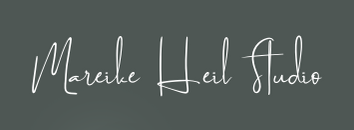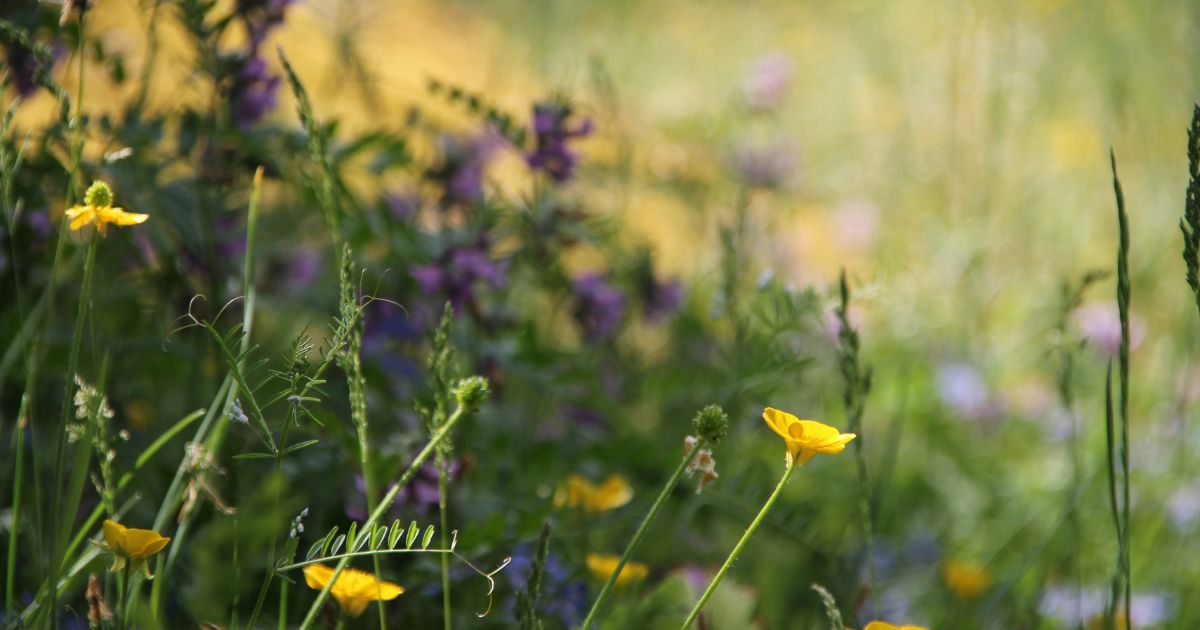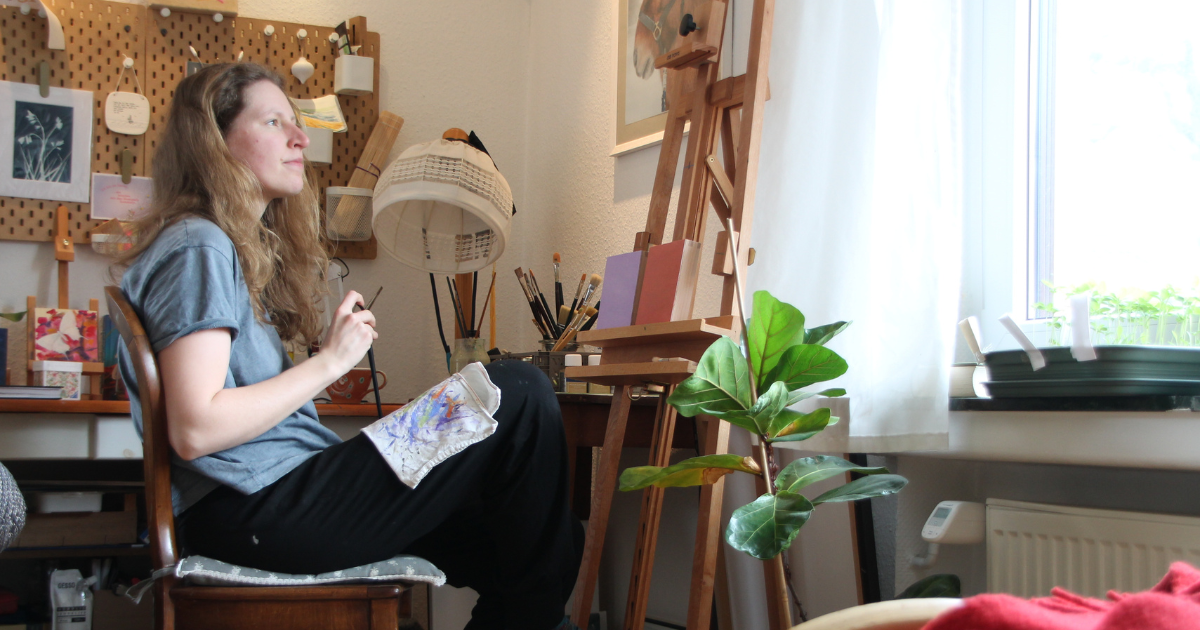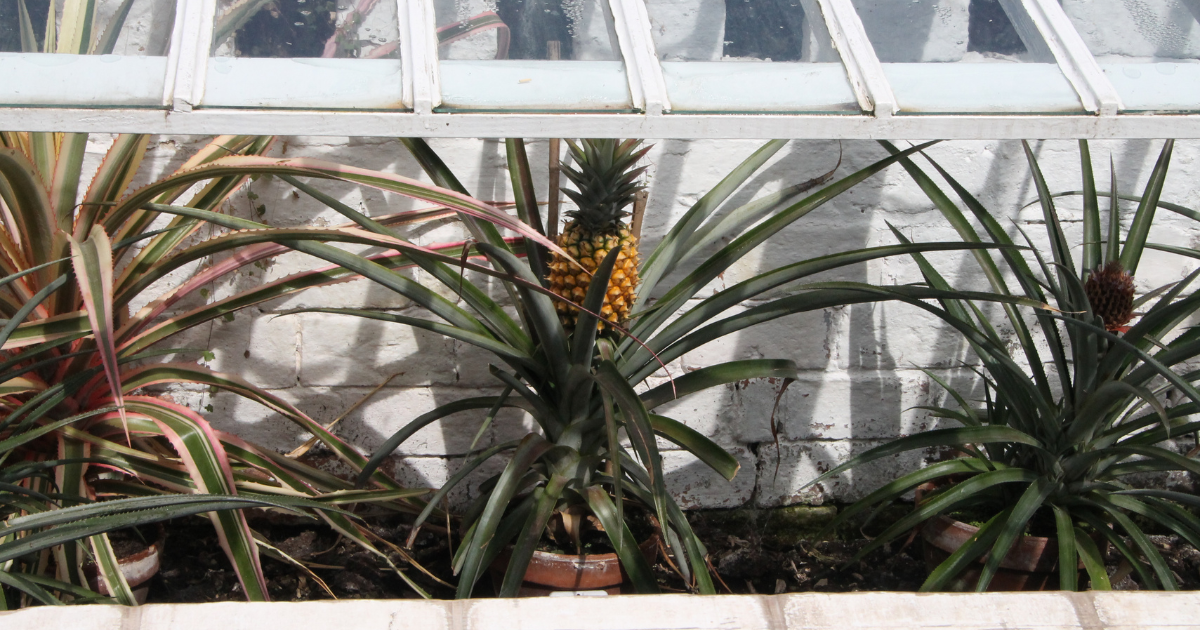Have you ever thought about the ingredients in your colours? Or where the hair in your brushes comes from? How the canvas or paper, which is the foundation of so many artworks, has been produced? I haven’t done this for a while as well, but as I try to buy sustainable clothes, reduce plastic waste when buying food or choose eco-friendly cosmetics, it wasn’t a solution to ignore my art practice. So, as I try to live more and more eco-conscious, I wanted to set up an eco-friendly art studio and maybe you want to do as well. In this article I tell you everything you need to know to get started.
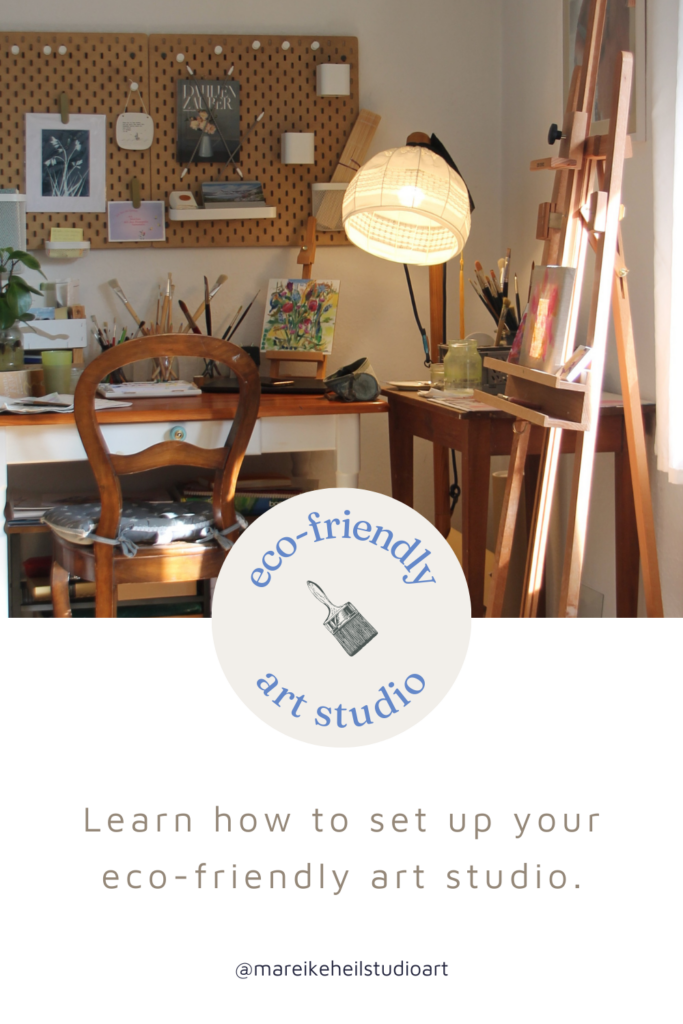
Reminder: Better start small than perfect.
First things first. You don’t need to immediately set up a perfect eco-friendly art studio, throw away all your art supplies and spend lots of money on new ones. Even non-sustainable products can be partly sustainable, when used for a long time and throwing away your old art supplies would produce unnecessary waste. I recommend picking one or two areas that are most important to you and start to build your eco-friendly studio from there.
Once you start asking questions about the sustainability of art supplies and their origins, you’ll find it to be a HUGE rabbit hole. While the whole world seemingly tries to change, there are very limited information about green art / eco-friendly art. What I now often wonder is, how one wants to show the beauty of the world through an artwork, while at the same time polluting it and slowly destroying this beauty. Therefore, when embedding sustainability in your art practice, also think about what your artworks tell the world.
What is an eco-friendly art studio?
There are many, different ways to establish sustainability within your art practice and build an eco-friendly art studio. In my eyes, for an artist, it is important to look at what we use to create. Many art supplies have severe impacts on the environment and health, as toxins weigh heavy on both. In addition, it is easy to forget the conditions of production – pigments for colours need to be mined, cotton for canvas or paper need to be grown – when buying a ready-made product in tubes, bottles or firmly stretched canvas.
On the other hand, sustainability doesn’t stop with the supplies. A business can be – and should be – sustainable, because that means it’s grown in a healthy way, supporting you and your life. Yes, a sustainable business might look for a way to compensate the web hosting space to make it “green”, but it also means it’s build in a way that supports you, so you don’t fall into burn-out or live a financially instable life. Therefore, building a flourishing art business is also a big part of it.
Having a green art studio also means asking questions. Even inconvenient ones. Even if there is no (satisfying) answer. Why am I buying this? Why not that? Would it change my art practice if I change XY? Would it change my artwork if I change XY? Is my art supporting my health? These are questions you could ask yourself. Think about them, journal about them if you like. A big, inconvenient question I learned to ask in university is: Who profits from this? From artists mainly ignoring sustainability and their health?
Difficulties while setting up a green art studio
As sustainability is new for the traditional art world, those who want to set up an eco-friendly art studio still need a lot of knowledge (and willingness to research). There are almost no labels to rely on and sometimes products are marketed as sustainable, but with a closer look it’s more of a marketing strategy than true sustainability (green washing). Read more about it here.
For example, when I browsed the catalogue of a huge art supply shop, they had a special page for canvases marked as sustainable, as the wooden frame was built from sustainably grown wood – spruce grown in Germany. Though spruce can’t be grown sustainably in Germany, as you might notice when looking at the Harz, I stumbled across something else. If it’s sustainable, where does the stretched cotton come from? Has it been grown biological? It might sound picky, but non-sustainable cotton production is very harmful to the environment and to people in less developed countries. You will find out more about canvases below.
Your Studio Space
Now we’re heading to the interesting part. A studio space is where our creativity flourishes, where we daydream and create. Where we meet challenges, be innovative and reflect. It should be nourishing so we can create the best art possible. To make it truly nourishing, I think it’s also important to not having to be afraid of the materials or supplies you use. I don’t want to be afraid to get cancer one day, because I touched my colours. I don’t want bees, bumblebees, and other insects to die because of my canvases, and forests being empty because of my wood panels. So here we start to create our eco-friendly art studio.
The Surface
The most common surfaces to use for artworks are stretched canvases and paper. Others are for example wood panel or metal. When looking at your surfaces, ask how has it been sourced and produced? What might be important and are there alternatives? Paper and Canvas is often made of cotton, though there are high quality alternatives as well. Choose recycled paper, paper made of fast growing plants like bamboo (from sustainable agriculture) or animal dung. Check for the FSC certification label. If you prefer canvas then choose linen or hemp over cotton. Both are also grown in the EU and need no pesticides. Also – as pointed out above – choose a wooden frame from sustainable forestry, but don’t be trapped by green washing. Same for wood panel and again check for the FSC label.
Especially canvas is often sealed with a polymere (plastic) primer, which helps to apply the paint in a base layer. Still, it’s plastic which would pollute the environment when left to biodegrade and its production pollutes the air and destroys landscapes. It might also slowly release toxic fumes (like some paint; called VOCs – volatile organic compounds) which are likely to cause health problems. Sadly, for now, I wasn’t able to come up with a good solution, because natural, traditional Gesso is made with parts of rhabbits (ugh.)
The Paint – Our Love
I love paint. The worlds and emotions you can create just through applying some paint onto a surface. What it feels like to go from idea, to sketch, to painting. Sometimes it looks like chaos splattered onto paper and then suddenly it’s all coming together. The most common paints in art studios are acrylics, watercolour and oil. So we take a quick look at them, but most approaches can also be applied to other paints like ink or pastels.
Acrylics –
Sadly you can’t have a sustainable view on acrylics. So, if you try to set up an eco-friendly art studio, one day you will need to decide if you keep them and use non-sustainable paint or look for something else. Acrylics are plastic-based colours with a solvent that makes them water-soluble, in order for you to paint easily and wash them off your brushes. They will most likely release toxic fumes (VOCs) and washing them in the sink causes microplastic to pollute the environment.
Watercolours and Oils –
Often these contain plastic polymers, binders and solvents as well, to give them a smooth texture with a balanced pigment release. Fumes, especially in oil paints mediums or thinners, might cause migraines and dizziness in artists. An alternative are sometimes traditionally produced watercolours or oil paints, as they don’t use plastic or chemical binders. Some manufacturers even provide an eco-friendly product line. Another way could be creating your eco-friendly paints yourself.
Note: If you’re especially interested in a non-toxic, eco-friendly way to paint with oil paint, I’ve got you covered! Check it out!
Pigments –
When setting up your eco-friendly art studio you should spend a while on learning about pigments. Some pigments caused severe health issues or an early death to artists of the past, as they damage body cells and organs. For that reason, many artists wear plastic gloves, which in my eyes isn’t the solution to this problem.
Anyway, as a first start try to reduce the use of colours with heavy metals (and read the warning labels) like cadmium, cobalt, manganese, or lead (though lead is nowadays forbitten in most countries). Also stay away from formaldehyde, trichloroethylene and xylene (VOCs). Instead choose alternatives with natural, mineral or plant-based pigment. When still using heavy metal colours use gloves, stay in a well-ventilated room and don’t wash your brushes in the sink, but in a separate bottle which you’ll need to take to the disposal park. Otherwise these heavy metals get into the environment and cause dying animals and plants. You might not notice it, because the first to die are microorganisms, but they are essential for many natural processes.
Questions to ask –
Every time you purchase a paint (better before doing so) or want to try a new paint, you can ask these questions:
- Where does the pigment come from? How has it been sourced?
- What kind of additives (fillers, binders, solvents etc.) are used in the paint? What do they consist of?
- What else do I use to mix with the paint to make it more fluid / dry quicker / dry slower?
- What is the tube made from? Can it be recycled?
Sadly, most manufacturers won’t provide this information due to business reasons, so you’ll notice a huge lack in transparency (which is also important for true sustainability). The only way to change this is through a demand by customers, therefore remember that with each purchase you make, you are showing a conscious choice towards sustainability.
Finishing Touches – Varnish
After our painting is done, dry and ready to find a new home and make someone else as happy as it has made us, it needs a finishing touch to protect it and give depth and sparkle to the colour. However, a varnish is often (maybe you already guessed it) plastic and chemicals. Natural Earth Paint offers a nice option for oil and acrylic paintings, but I haven’t found any other yet.
Brushes – Where the magic happens
Truth bomb: As far as I know, you can’t buy sustainable brushes for your eco-friendly art studio. Why? Here you go:
There are two options for brushes: Animal hair and synthetic (plastic) hair. Animal hair wouldn’t be vegan, but still a sustainable solution. BUT no one knows where this hair comes from and you’ll never find the necessary information. This topic drives me a bit insane, because I simply can’t believe it.
The best artist brushes are said to be made from squirrels or weasels hair (sable-brush), while others are made from pigs (hog bristle), horses, goats hair or else. As fur is already forbitten in the fashion industry, I ask myself why the art industry is still allowed to make brushes from animals like squirrels or weasels without verifying how they lived. I don’t want my art practice to hurt animals. Still, if these animals would live a harm-free life and wouldn’t need to be killed to create brushes, animal-hair brushes would be the more sustainable solution.
As long as that doesn’t happen the non-sustainable solution is using a synthetic brush made of plastic (makes it also vegan), as there are no animals involved. However, these synthetic brushes will produce microplastic through usage and probably can’t be recycled. Thus, the longer you use them and the better you care for them, the better for the environment. Brushes produced from recycled plastic would be great.
I hope, one day I don’t have to decide between not-good and not-good. A sustainably produced, plant-based, biodegradable brush would be great.
Recycle, Reuse, Upcyle – DIY your eco-friendly art studio
Besides these bigger issues there are some very small steps you can take to set up an eco-friendly art studio. Here are some ideas:
- Bottles and Tubes: clean and reuse for storage. Left-over paint sometimes can be filled in empty tubes (open at the back) and used again.
- No throw-away tissues but towels.
- Buy a used easel instead of a new one or collaborate with fellow artists if you don’t need it always.
- Use ceramic, stone or glass palettes over plastic or thin wood and clean it to reuse. Ask in a hardware store or kitchen studio if they have some left-overs.
- Don’t wash your brushes in the sink and use the left-over paint for another painting.
- Sell brushes, colours or anything else second-hand you don’t use.
Emerging as an eco-friendly artists
That’s it. I think it is possible to set up an eco-friendly art studio and have a sustainable art practice by all means, but it’s also difficult as most sustainable manufacturers are small companies and it still isn’t as big a deal as in other industries.
There are also many other parts to take a closer look at: frames, pas partouts, the glass of the frames, prints (paper and ink) and how to licence art in a sustainable way. However, with the knowledge from above you’ll be able to get started and set up a studio that nourishes you in many more ways. Enjoy exploring a different world of art, where sometimes you are asked to be more of a crafter than a creative.
